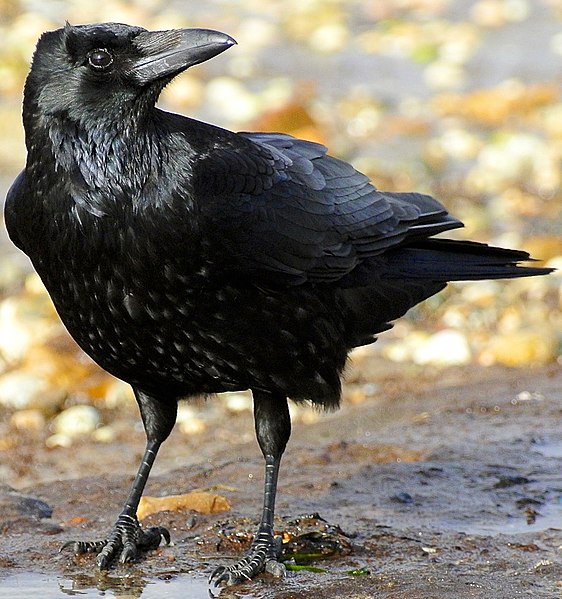
VIEW ON NATURE: Nevermore
By: Stephen Wendt
Of all the birds of Virginia, ravens are the most revered, mysterious, and interesting. The northern raven is a large, pure-black bird standing 25 inches tall and weighing over 2.5 pounds with an impressive 4+ foot wingspan. Ravens can live to 40 years in captivity and 21 years in the wild, which is a very long bird lifespan. Young birds may travel in flocks called a “conspiracy” or an “unkindness”, attributed to their stressful behavior in juvenile conglomerations until pairing off and mating for life.
Raven’s vocal repertoire is amazing - 33 different categories of vocalization! I’m always amazed at their gurgling croaks, shrill and rasping calls, and rapid series of loud, un-birdlike wood knocking sounds that echo along the cliffs on Skyline Drive where ravens thrive. In captivity, they can be taught to speak like parrots which floored me when I heard one speak in a deep voice. They are also amazing mimickers of other birds and animals and even manmade sounds such as engines, flushing toilets, musical instruments.
Coexisting in mountainous, desert, snowy, rural, and urban places with humans for millennia, ravens have succeeded on their wits, omnivorous diet, and marvelous flying skills. They are very intelligent, some say on the level of dolphins and chimpanzees. They pass logic tests, solve puzzles, drop rocks on nest intruders, pull fishermen’s’ lines to steal fish, and point out near and far objects to other ravens with their beaks, being the only animal (other than chimps) to gesture. Ravens are also the only animal (other than bees, ants and humans) that can communicate about distant objects or events.
Ravens are extremely resourceful when it comes to sustenance. They happily eat grains, berries, fruits, insects, small animals, food waste, and carrion. Over the centuries, they’ve been the subject of much folklore, mythology, literature and art across European, Asian, and many Native American cultures. Their penchant for eating carrion, especially war and plague victims, led many cultures to view ravens as harbingers of doom. Many the early European cultures believed ravens were banished or incarnated damned souls or Satan. This coupled with their ability to talk, elevated ravens around the globe to mystical status as a mediator between life and death, a theme picked up by Edgar Allan Poe in his poem, The Raven, where the bird eerily speaks, repeating the word “Nevermore” as the narrator laments the death of his love, Lenore.
Ravens symbolize bad luck in Greek mythology, often as gods’ messengers in the mortal world. It is the first bird mentioned in the Hebrew Bible, is cited in the Quran, and in the Book of Genesis as the bird that Noah releases from the ark after the great flood to learn if the waters have receded. And let’s not forget that these brilliant birds have been the legendary guardians, protectors of the Tower of London. Legend has it that England will not fall to a foreign invader as long as Ravens are kept on the grounds under the care of the Ravenmaster. At least six are in residence at all times as a nod to the legend.
As a naturalist, I strongly tip my hat to the notorious, cunning raven.
This story can be read in full along with other nature stories in the ENDEAVOR News Magazine at www.annandalechamber.com/theendeavornwsmagazine.rhtml
(Copyright © 2012 Annandale Chamber of Commerce. All rights reserved. (Photographs & images, on this page, and on this website, are not available for use by other publications, blogs, individuals, websites, or social media sites.)
Copyright 2012 Annandale Chamber of Commerce. All rights reserved. Privacy Policy



